How I Shot That: The Cameras and Cinematography of Sundance Nonfiction Films

IndieWire reached out to the cinematographers behind the nonfiction features premiering at the 2022 Sundance Film Festival, and asked which cameras, lenses, and formats they used, and why they chose them to create the looks and meet the production demands of their films. Here are their responses.
Films appear in alphabetical order by title.
More from IndieWire
Here Are the Top 15 Stories from Sundance 2022 That Readers Loved Most, Ranked
This Year's Sundance Crop Yields More Non-Fiction Oscar Contenders Than Fiction
“All That Breathes“
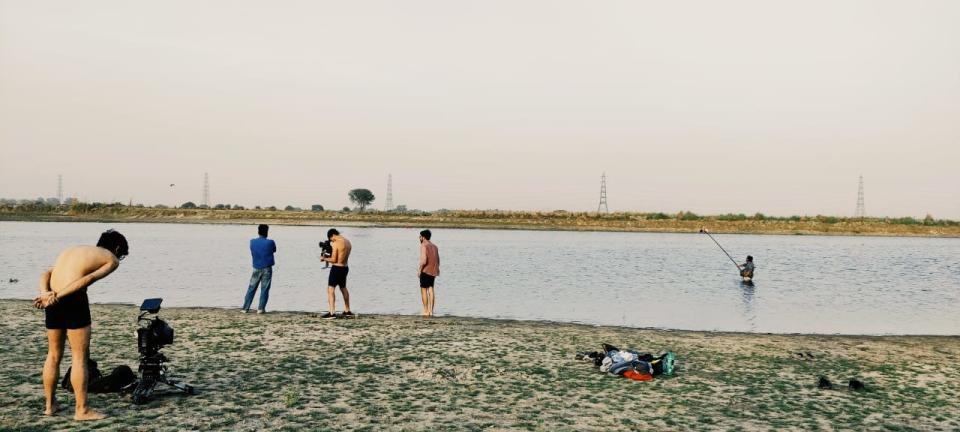
Care of filmmaker
Section: World Cinema Documentary Competition
Dir: Shaunak Sen, DoP: Ben Bernhard
Format: 4K Canon Log/ V-Log
Camera: Canon EOS C500MkII, Panasonic S1H
Lens: Leica R Primes and Zooms, Angenieux 45-90mm, Canon 500mm and Macro
Bernhard: In “All That Breathes,“ our approach was always “to render the scientific into the poetic,“ as Shaunak puts it. We were intrigued by how the organic matter of the earth shifts and changes because of human intervention, and how new natural habitats are formed. That’s why we chose a cinematic language that would keep the unity and duration of one shot, instead of editing. Using long pans, crane movements, or dolly tracking to combine different elements in a slow tempo and narrow depth of field, to enhance how everything in the city happens in parallel.
Shooting animals in the open required a specific dynamic of preparation and improvisation, while staying in budget. That’s why I chose to film with a Canon C500MkII and a Panasonic S1H. This combination and the modular designs gave me the needed variety, from handheld to a 1000mm tripod setup. We shot logarithmic with both cameras, to be able to be flexible and achieve an organic look in postproduction. As the log2 curve of the Canon is very similar to the Arri curve. I tend to use Arri LUTs as well as a custom made S1H-to-Arri LUT for on set preview and dailies. This helps to bring the colors in the desired direction.
In addition I like using vintage lenses to break the digital feel of modern cameras. That’s why I brought my set of adapted Leica-R primes and an Angenieux Zoom they specifically made back then for Leitz. I love the look and gentle sharpness these lenses have. Often I even combine them with 1/8 or 1/16 Black Pro-Mist filters.
“Brainwashed: Sex-Camera-Power“

Care of filmmaker
Section: Premieres
Dir: Nina Menkes, DoP: Shana Hagan
Format: Super 35, 4K
Camera: RED Raven, Canon C300 MkII, Sony FX9
Lens: Canon 17-120 Cine-Servo, Canon 30-300 Cinema Zoom, Canon EF L Series zooms
Hagan: The throughline of the film is Nina Menkes’ staged presentation “Sex-Camera-Power.” We had a limited budget, so we gladly utilized a few Red Raven cameras lent to us for this part of the production. We loved using the Canon 17-120 and 30-300 lensing to allow us maximum flexibility for the three-camera coverage we needed to shoot the large 24′ screen on stage, Nina presenting, and also the audience. And for our interviews and scene work we used a combination of Canon C300 Mk II, Sony FX9 and even a Black Magic Cinema Camera. Because we were on such a tight budget, when shooting outside of LA the producers hired DPs locally. I think in documentary work, sometimes you have to embrace the mix of cameras and lenses. In post production, Final Colorist Mike Sowa at Fotokem helped us bring our original footage and over 175 film clips all together to make the film really sparkle!
“Calendar Girls“

Section: World Cinema Documentary Competition
Dir and DoPs: Maria Loohufvud & Love Martinsen
Format: HD
Camera: Sony A7SII
Lens: Voigtlander Nokton 40 mm, Vintage Tokina Zoom tele lens, SLR Magic
Loohufvud & Martinsen: The equipment was very lightweight, which made us very flexible for any situation that came up. As this is a documentary, we had to be prepared for anything, any time. Also, we didn’t want a big camera between us and the women being portrayed. We didn’t want that distance. In every situation we were there as people — people who happened to have cameras with us. We did a lot of research before we started, and based on our budget and our demands on flexibility, the Sony A7SII, paired with vintage lenses, had a nice cinematic feel that we really liked.
“Descendant”

Courtesy of Participant
Section: U.S. Documentary Competition
Dir: Margaret Brown, DoP: Justin Zweifach & Zac Manuel
Format: Canon xf-avc HD/4K, Canon Raw LT 4K, Arri 2.8k ProRes 4444
Camera: Canon c300m1, Canonc300mii, Canonc300miii, Panasonic Eva1, Sonyfs7, Arri Alexa Mini, DJI X7
Lens: Canon 17 – 55,Canon 70-200, Canon L series 35mm, Lomo round front anamorphic 35mm/50mm, Panavision T series 35mm/50mm
Zweifach & Manuel: Most of the film was captured very simply with a small crew and a single, small camera — usually a Canon C300 (we used all three generations) stripped down and held in the hands so as to keep a light and less imposing footprint. Margaret tends to work improvisationally and instinctually, and is always looking to surprise audiences with new ways of capturing life, so having zooms allowed us to play with lens lengths and perspective while working quickly and honoring the moment. For a few sections in the film we used a lomo round front anamorphic paired with the Arri Alexa Mini. We may have been the ones pointing the camera, but it’s the history of the people of Africatown that created these images. We felt the distortive and flaring qualities of this lens highlighted the presence of ancestry in this story. For the portraits in the middle of the film, we used a 50mm Panavision T Series, which tends to record life with a certain robust, high-contrast quality that we felt underlined the power of knowing one’s familial roots. We used the 35mm l series on the Canon for some of the verité that felt more conversational, but it was a great lens on which to capture the Africatown landscape. To me, at 35mm, it feels like the audience is just standing in Africatown, and we wanted to bring audiences to the South with us.
“Downfall”
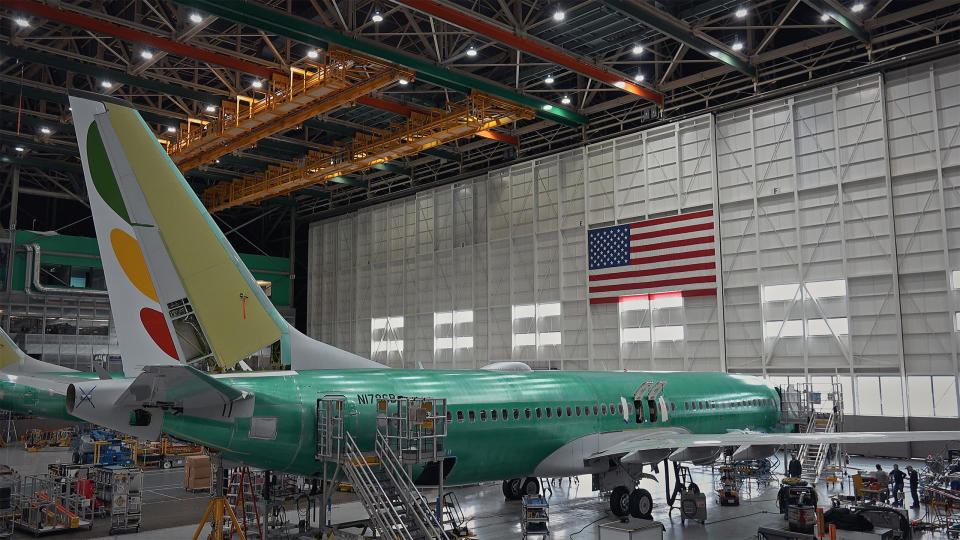
Netflix
Section: Premieres
Dir: Rory Kennedy, DoP: Graham Willoughby
Format: Super 35 sensor 4K 16:9
Camera: Canon c500ii
Lens: Canon CN-E Primes
Kennedy: We chose the c500ii because it is a robust, well-built, and light camera with a beautiful sensor and an easy-to-use interface well suited for doc work on both a visual and an audio level. The camera was able to be quickly and easily adapted from sticks to handheld, and could be built to handle any scenario we could dream up or stripped down to squeeze into small places. It was the perfect camera for us to travel with, and it was very easy to find in all of our multiple locations in the event that we needed to source extra or replacement supplies.
The CN-E primes are very lightweight, have great mechanics and a beautiful round bokeh. We loved the sharpness these lenses provided, as well as the gorgeous warmth they added to the skin tone, giving our subjects a clean, honest, and pleasing presentation while they led us through this dire subject matter. These lenses looked great wide open, which meant that we could approach our unscouted locations with our short setup times and small crew and throw the background out of focus, making even dull environments look great quickly and easily and minimizing how much work we had to do to get there. Further, this fast-focus fall-off helped isolate our people from the environment, creating a more intimate visual space for their conversation. Also, we were often able to take advantage of the available lighting in dark scenarios and save time there because of how well these lenses responded.
“The Exiles”

Connor Smith
Section: U.S. Documentary Competition
Dir: Ben Klein & Violet Columbus, DoP: Connor Smith
Format: 16mm Film, Digital, Super 8mm Film
Camera: Arriflex 16SR2, Canon C300, Sony F5, Blackmagic Ursa Mini, Canon Autozoom 814
Lens: Zeiss Primes, Fujinon 18-5mm Zoom
Klein: Because so much of our project is based around archival materials that were shot on 16mm, we felt it was important to shoot on film in the present day as well, as a device to merge the two main worlds of our movie. Because shooting on film is not the most cost-effective route, we mainly shot digital, and used 16mm and super8mm for b-roll. The only time we shot sync-sound on film was our final interview with our main subject, Christine Choy. We shot that interview with three digital cameras, as well as a 16mm camera that would roll on our most important questions. We used Christine’s old Arriflex 16SR2 for this interview, which was special to us.
“A House Made Of Splinters”
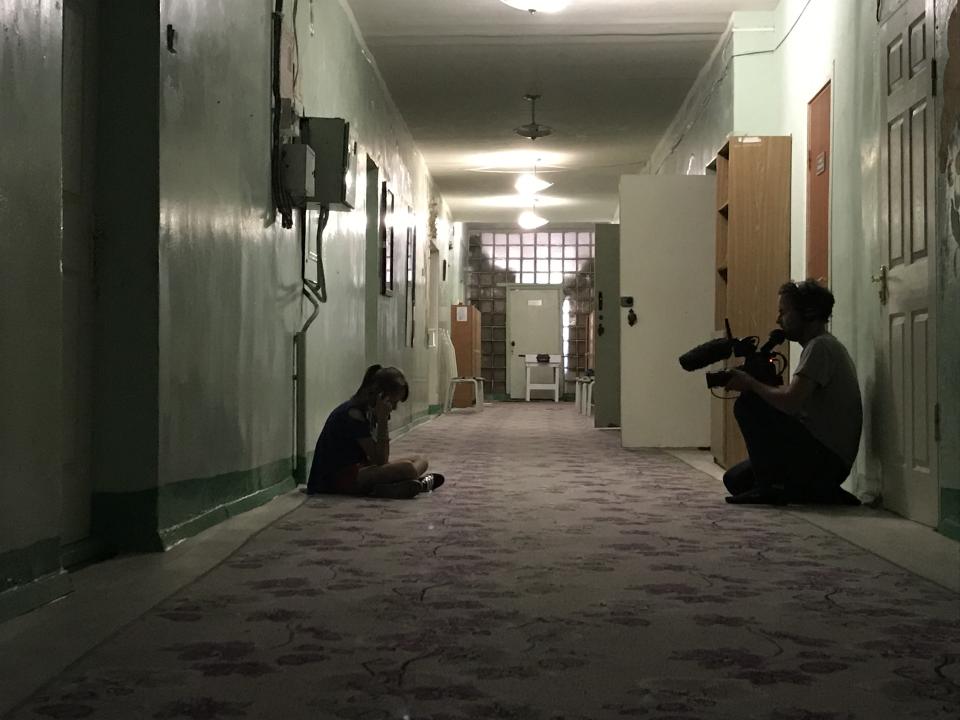
Azad Safarov
Section: World Cinema Documentary Competition
Dir & DoP: Simon Lereng Wilmont
Format: 4K MXF
Camera: Canon C300 mk2
Lens: Canon 24-70 mm & Canon 70-200 mm
Wilmont: I value working in the intimate space that I am able to create when it’s just my subjects and me with a simple camera set-up. In my experience, it makes it so much easier to establish that all-important trust, where at some point, the camera just blends into our shared everyday. It becomes an indifferent piece of equipment or kind of an extra friend in our group. That’s when the magic usually starts happening, and I am able to capture the most emotionally raw and honest scenes.
In my opinion, the Canon C300 with a Canon 24-70mm lens is perfect for this process, because it’s a relatively small and lightweight setup, and the lens is so versatile for shooting in all the different kinds of situations you find yourself in when you’re shooting documentaries.
“Jihad Rehab“
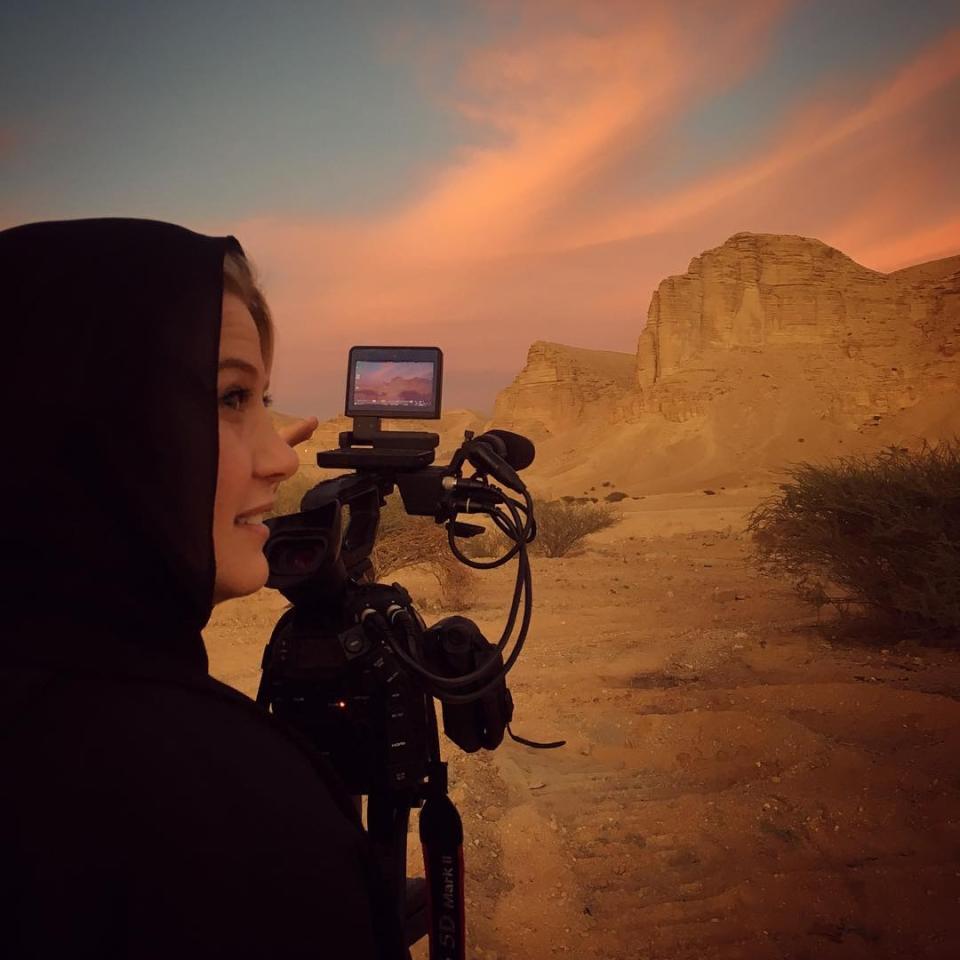
Bryan Storkel
Section: U.S. Documentary Competition
Dir: Meg Smaker, DoPs: Meg Smaker, Jack Schurman, and Brian Liepe
Format: 4K Digital
Camera: Canon C300 Mark II, Sony A7S Series, Red Weapon
Lens: Canon IF Lenses, some Cook lenses with the RED
Smaker: The Canon C300 is a workhorse and is pretty bomb-proof. So shooting in a place like Saudi with sand storms and really high temperatures and extreme humidity changes, we needed something pretty reliable. Canons are like the Honda Civic of cameras. They might not look sexy, but they’re reliable and get the job done.
“Last Flight Home”

Morgan Doctor
Section: Premieres
Dir & DoP: Ondi Timoner
Format: 2K and 4K
Camera: C300, C100, 5D, 80D, iPhone 12 and 10
Lens: Canon 70-200, 50MM and 24MM primes, 28-135MM
Timoner: “Last Flight Home” is the most intimate film I have ever made. It follows the last several weeks of my father’s life leading up to his intentional death and delves back into his extraordinary life organically from there. There was no pre-production, and, in fact, I didn’t know I was making a film. I was just trying to bottle him up, so we could have something left of him besides memories when he was gone. I didn’t want to negatively affect anyone’s experience during this sacred time, so the cameras had to be as unobtrusive as possible and were not the main event! The 70-200mm helped to get in there while the main camera was actually located in an adjacent room, but most of the time I had several cameras recording and iPhones were used for impromptu filming. As none of us had been through this before, no one knew what to expect.
“Lucy and Desi“
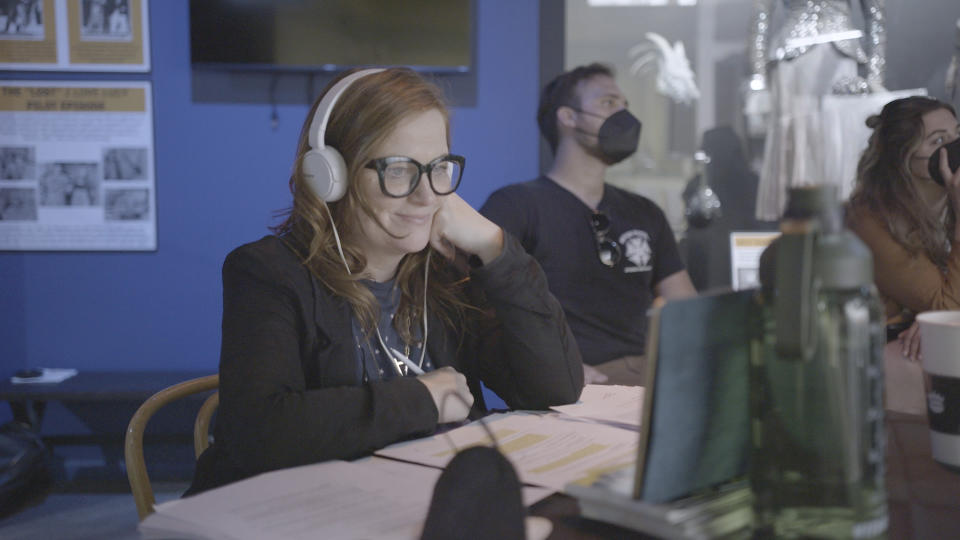
Courtesy of Amazon Prime Video
Section: U.S. Documentary Competition
Dir: Amy Poehler, DoP: Ernesto Lomeli & Axel Baumann
Format: 4K
Camera: Sony Venice
Lens: Zeiss Supreme Primes
Producer Ben Murphy: These tools were fantastic for this job. They gave us modern optics for photographing beautiful interviews, as well as a classic look that resonates with the story of Lucy and Desi.
“My Old School“

Courtesy of filmmaker
Section: Premieres
Dir & DoP: Jono McLeod
Format: 4K
Camera: Arri Alexa Mini
Lens: Angenieux Optimo 17-80mm T2.2
McLeod: “My Old School” explores one of Scotland’s most incredible stories and what happened when a 32-year-old man returned to his old school, taking on a new identity as a 16-year-old boy. It’s an extraordinary tale, one of ambition, deceit, friendship, and the barriers that make up the British class system. It is one which I believe is as unique as it is universal and, for me, is deeply personal.
Brandon Lee was my old classmate, and in the film, my fellow classmates and our teachers tell what actually happened. I also spoke to Brandon, who granted a lengthy interview on the condition that his voice could be used — but that he would not appear on camera. This presented a challenge, one that we addressed with Alan Cumming, one of Scotland’s greatest actors, lip-syncing those interviews.
The success of the film hangs on the intimacy and connection I have with my classmates and teachers. Eye contact and engagement was crucial. We want people to look down the lens and feel that warmth and the connection that we still share. We want them to feel a part of class 5C at Bearsden Academy in the ’90s. The Arri Alexa Mini and Angenieux Optimo 17-80mm T2.2 were crucial in allowing us to achieve this. The zoom gave us a range that worked well at eye view and allowed us to experiment with different sizes within the interviews. Parts of the story are told through animation, but sit-down interviews form the spine of the film. The kit we used allowed us to create a cinematic look, one that is not too sharp or polished and gives the softness, warmth, and nostalgic feel that we were aiming for.
“2nd Chance”
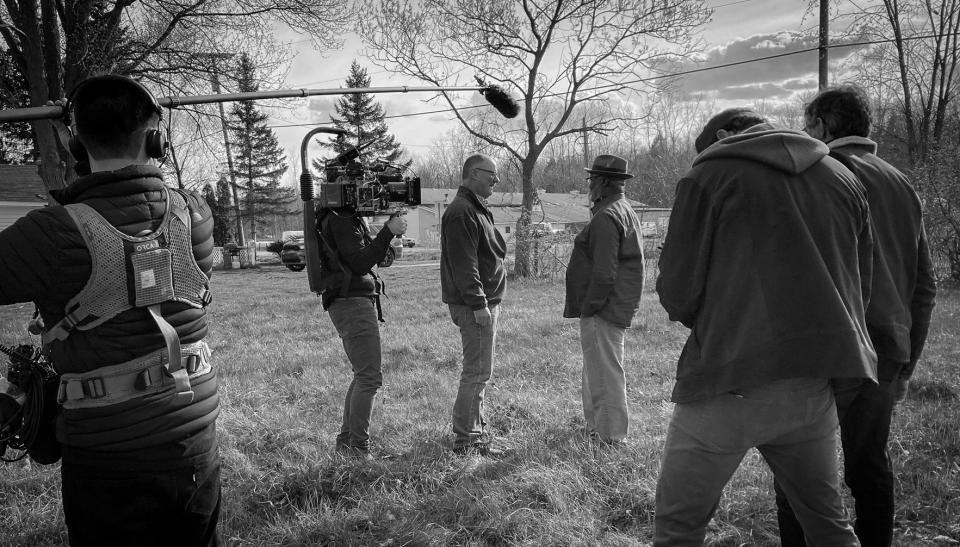
Courtesy of filmmaker
Section: U.S. Documentary Competition
Dir: Ramin Bahrani, DoP: Adam Stone
Format: 8K Red Large Format
Camera: 2x Panavised Red Monstros
Lens: Panavision C & E Series Anamorphics
Stone: The look of the film was simplistic and straightforward. The director and I did not want the visuals to compete with the story or main character. That’s why we shot with Monstros and Panavision Ananmorphics. We wanted a painterly aesthetic that was stately and authentic, akin to a Werner Herzog film where everything takes a backseat to the interviews.
“The Territory“

Courtesy of filmmaker
Section: World Cinema Documentary Competition
Dir: Alex Pritz, DoP: Alex Pritz & Tangae Uru-eu-wau-wau
Format: 4K Slog3
Camera: Sony FS7, Sony FX6, Sony FX9, Sony HXR-NX80
Lens: Sigma Art 35mm, Sigma Art 50mm, Sigma Art 24-70, Zeiss LWX 21-100, Laowa 24mm probe lens
Pritz: We wanted our film to feel as intimate as possible, drawing our audience into the lives of the film’s participants, while also maintaining a clear visual distinction between the forest and the frontier environments. To achieve this, we relied more on prime lenses at wider focal lengths when filming in the forest, almost exclusively handheld. Coverage of the Indigenous community also switches between an outside perspective, filmed with cinema equipment, and a first person perspective, documented by the community themselves with professional camcorders. When filming in rural areas with farmers, we occasionally switched to the longer Zeiss zoom lens on a tripod. By moving between a naturalistic, fluid handheld look and a more traditional and mechanical aesthetic, we hoped to help convey a sense of the ideological differences underpinning this conflict, and the shift of perspective when moving between the rainforest and the surrounding farmlands.
The scale of deforestation in the rainforest is difficult to capture purely at eye level. The loss of this rich ecosystem needs to be felt at both the micro level and the macro level: it is about the amazing biodiversity that can be found within any square meter of rainforest, as well as the sheer volume of land being deforested across the continent. Along with the up-close-and-personal human storylines, we chose to move between wide satellite imagery and detailed macro insect photography to help illustrate the rich textures, as well as the sheer volume of life, being lost as the rainforest is cleared. For nature shots, we chose to use a Laowa 24mm probe lens that allowed us to get extremely close to insects, frogs, and butterflies while maintaining the wide and immersive focal lengths being employed when shooting vérité scenes.
“To the End“
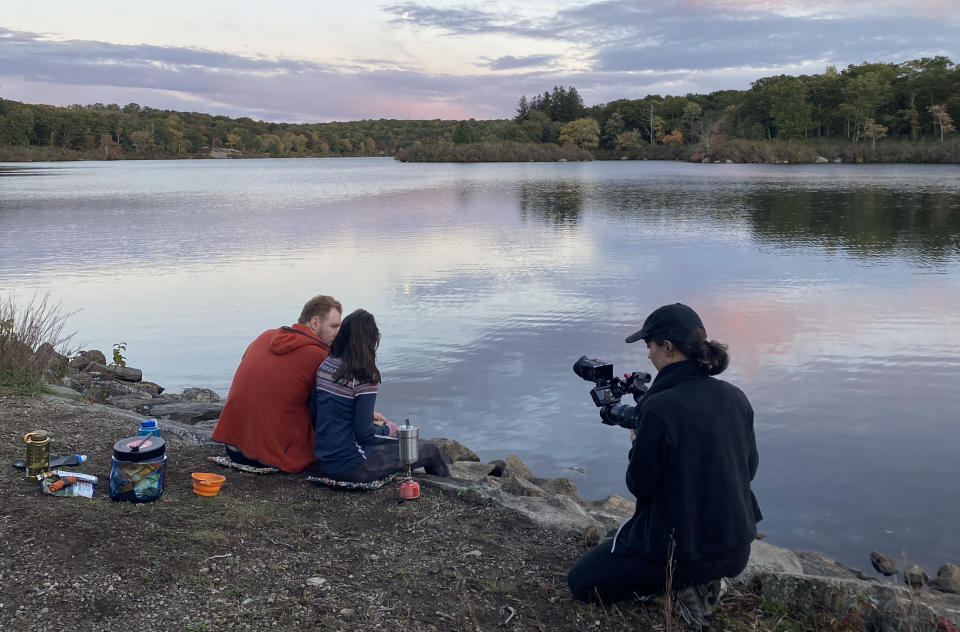
Karen Gaytán
Section: Premieres
Dir & DoP: Rachel Lears
Format: 4k DCI XAVC-I
Camera: Sony FX6, FX3 and FS7 primarily; also Canon C500 mkii, and several others
Lens: Sony FE 4/24-105, Sony FE 2.8/70-200, Sony FE 2.8/12-24, Sony FE 1.8/55, Zeiss Batis 1.8/85, Canon EF-L 24-105/f4, Canon EF-L 70-200 f2.8
Lears: The goal of our cinematography for “To the End” was essentially to capture cinematic images within the constraints of a journalistic workflow. The film was shot over a period of over three years, during which I upgraded my kit from the Sony FS7 to the FX6 and FX3. I shot much of the film in run-and-gun vérité style with the FX6 and FS7; for this type of shooting, the 24-105 and 70-200 lenses offer great flexibility. The film deals with dark subject matter — the existential threat of the climate crisis, and the corporate power and influence that make political solutions so difficult to achieve — and we purposely shot much of the film at night, or in cloudy weather, to create a dark and urgent tone. For these low light looks, the FX6 is fantastic. In some situations, fast prime lenses also came in handy.
I shot a number of scenes that involved continual movement on smaller mirrorless cameras on a gimbal (Ronin-S). The FX3 with Sony lenses worked very well for this because the autofocus is excellent and made it possible to get walking closeups with nice bokeh in the background, even within on-the-fly documentary shooting situations. A number of the scenes on Capitol Hill were shot this way, along with the trekking, hiking, and running sequences. Taking the gimbal running (or hiking 8 miles over rough terrain or trekking 13 miles in 90 degree heat) is not easy for a petite human such as myself, but it does get the shot. Because the project required extensive travel and often involved shooting on short notice, we also had a number of additional cinematographers covering important scenes. Ray Whitehouse, our 2nd unit DP based in Washington, D.C., was on a Canon C500 mkii, matching the overall project’s lens choices and stylistic conventions.
“We Met in Virtual Reality“
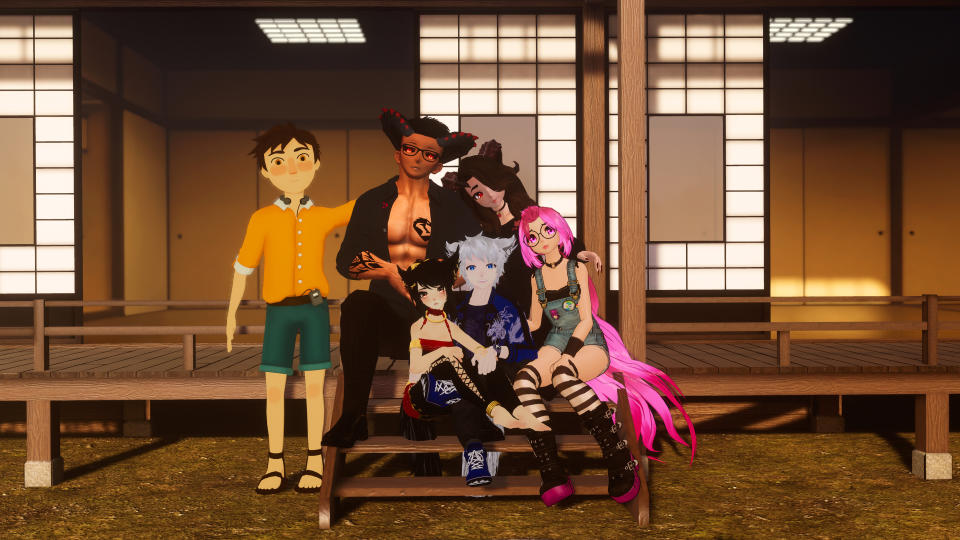
Finn
Section: World Cinema Documentary Competition
Dir & DoP: Joe Hunting
Format: 2K
Camera: Virtual Camera ‘VRCLens’ inside virtual reality platform VRChat.
Lens: N/A
Hunting: “VRCLens” gives me the cinematic tools equal to a real world cinema camera inside VR, allowing me to shoot handheld, on gimbles, and fly like a drone. The virtual camera simulates depth of field through intricately designed shaders effects. It is by far the best, and one of the only, virtual cameras created for shooting inside social VR.
Best of IndieWire
New Movies: Release Calendar for January 28, Plus Where to Watch the Latest Films
How I Shot That: The Cameras and Cinematography of Sundance Scripted Narrative Films
Sign up for Indiewire's Newsletter. For the latest news, follow us on Facebook, Twitter, and Instagram.

